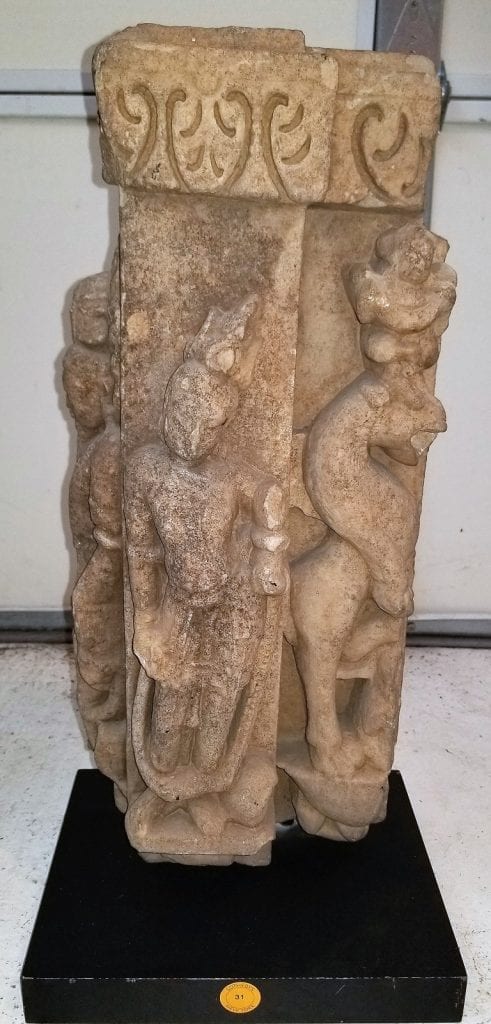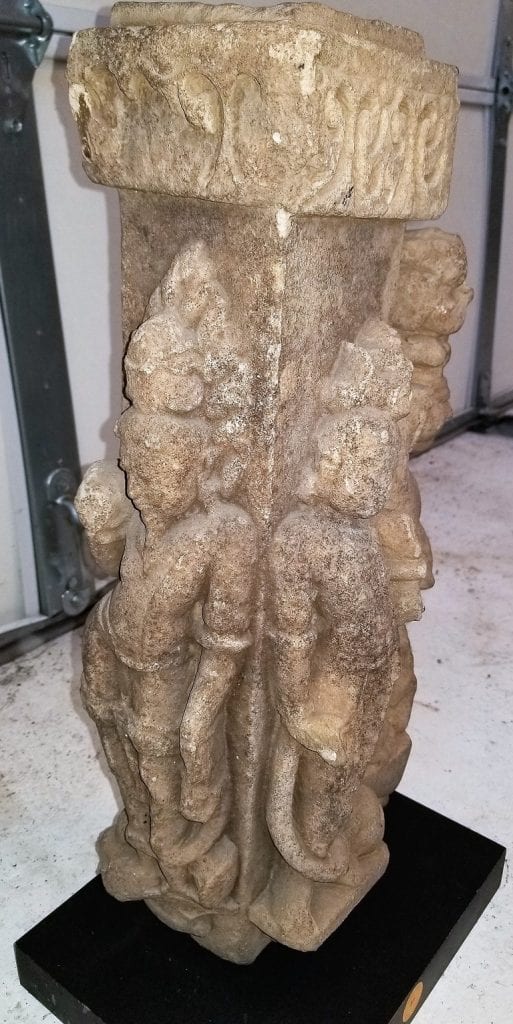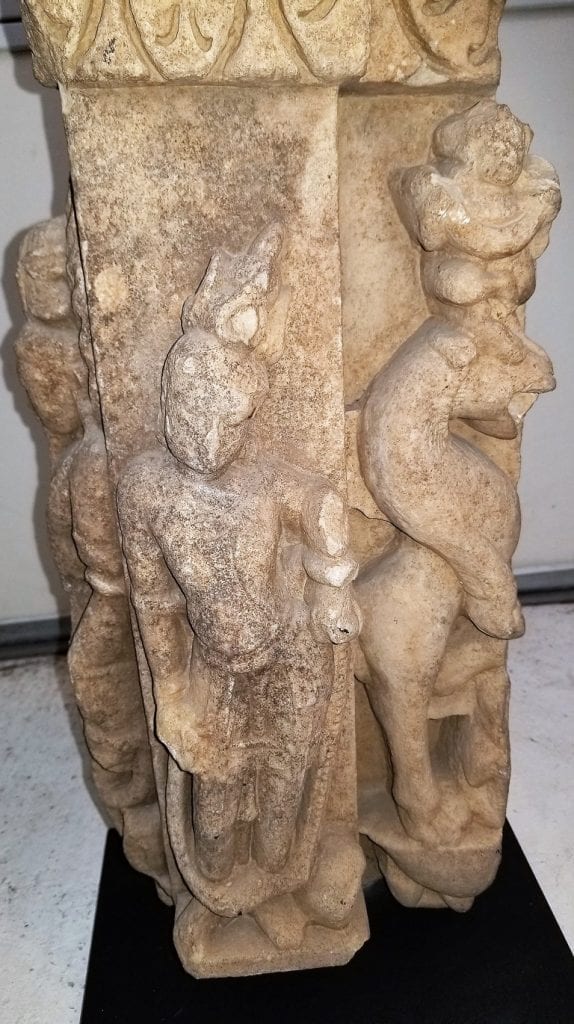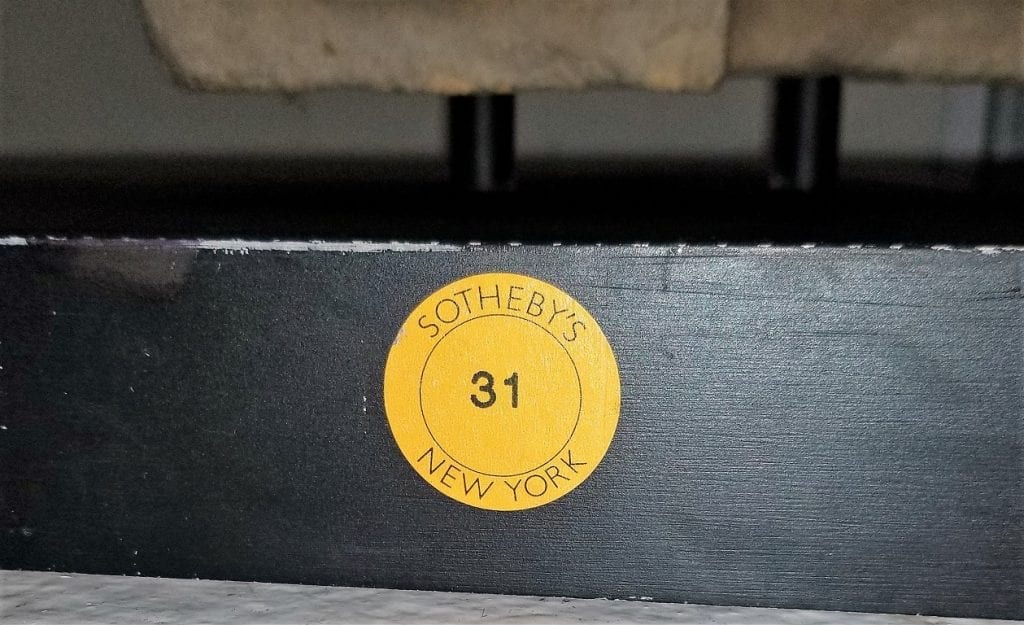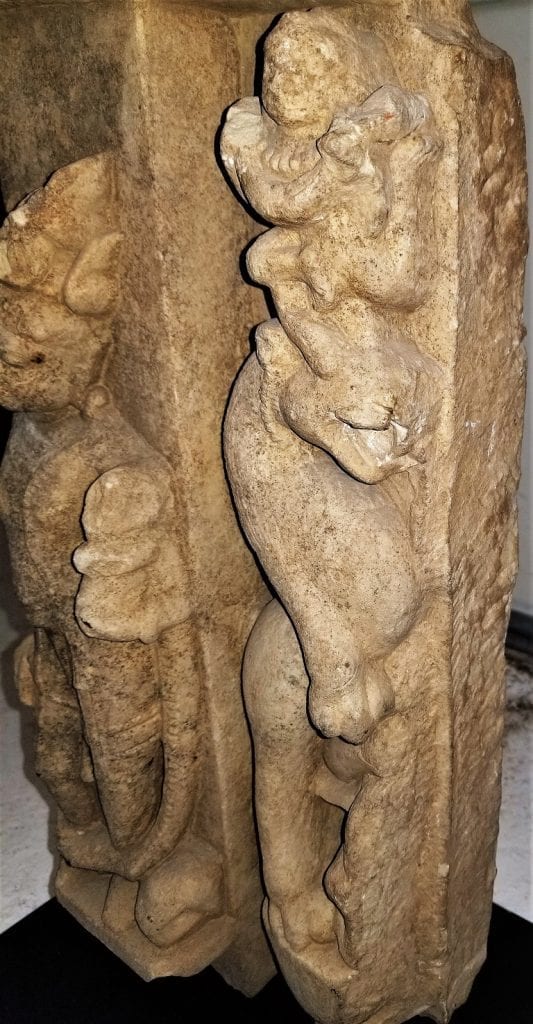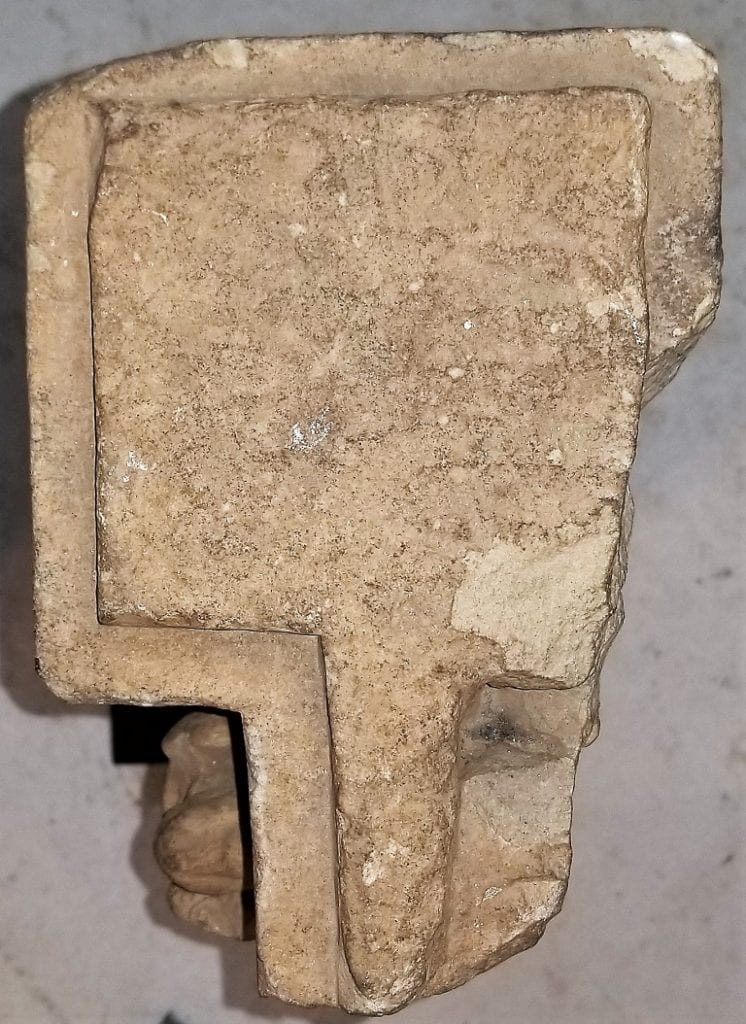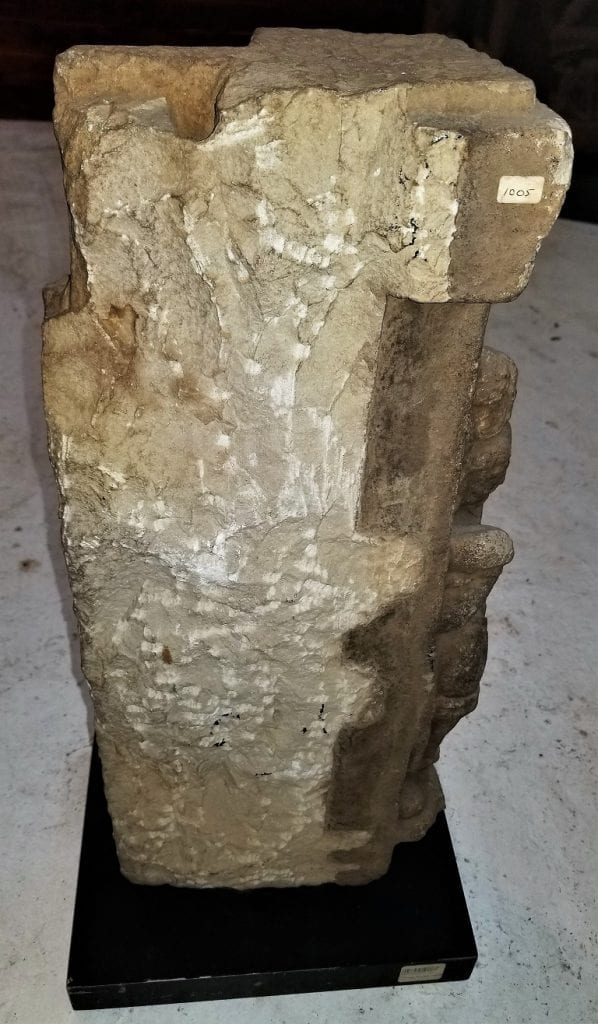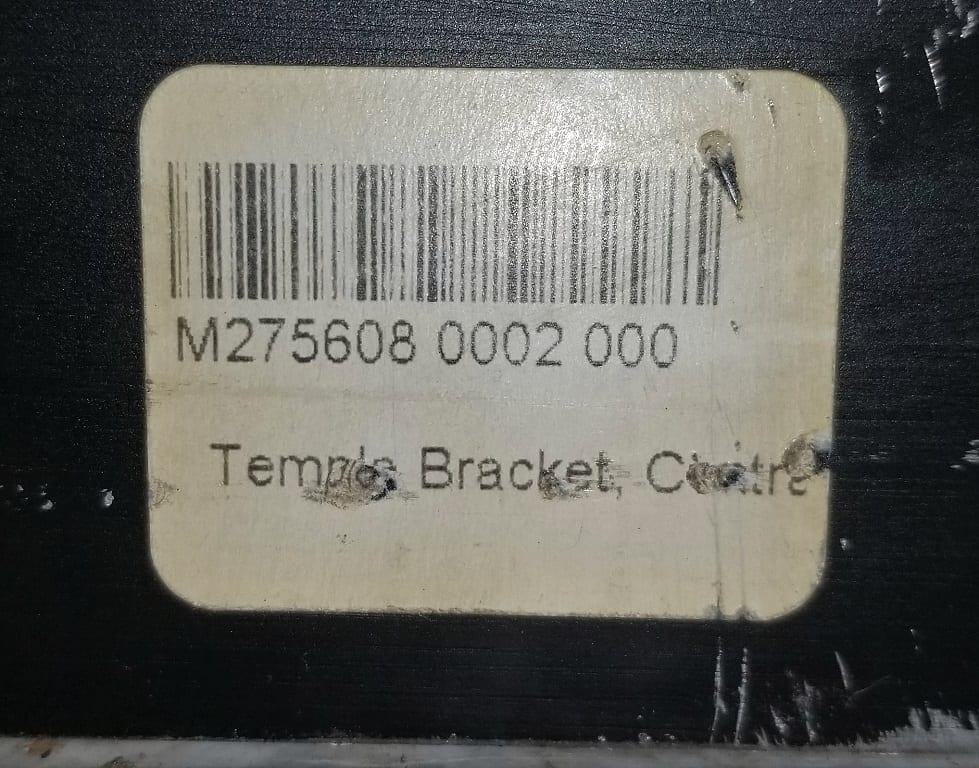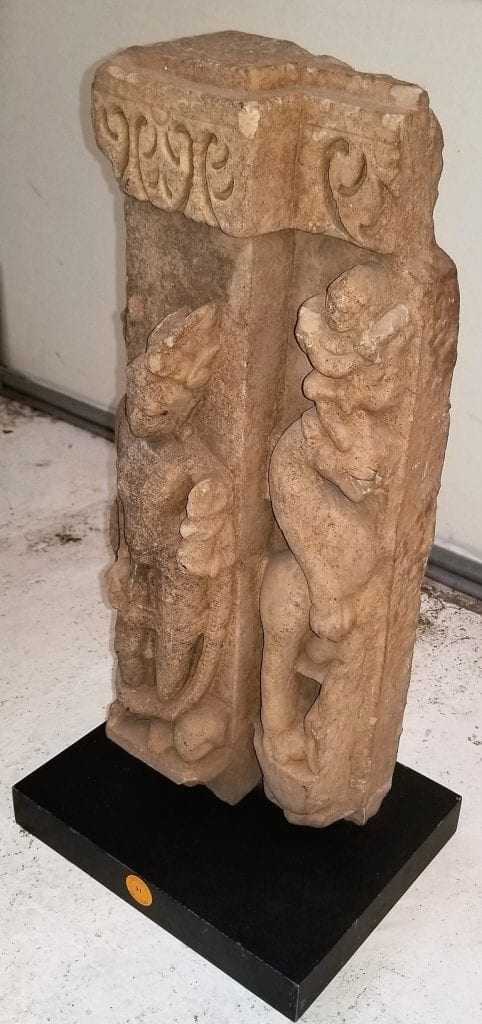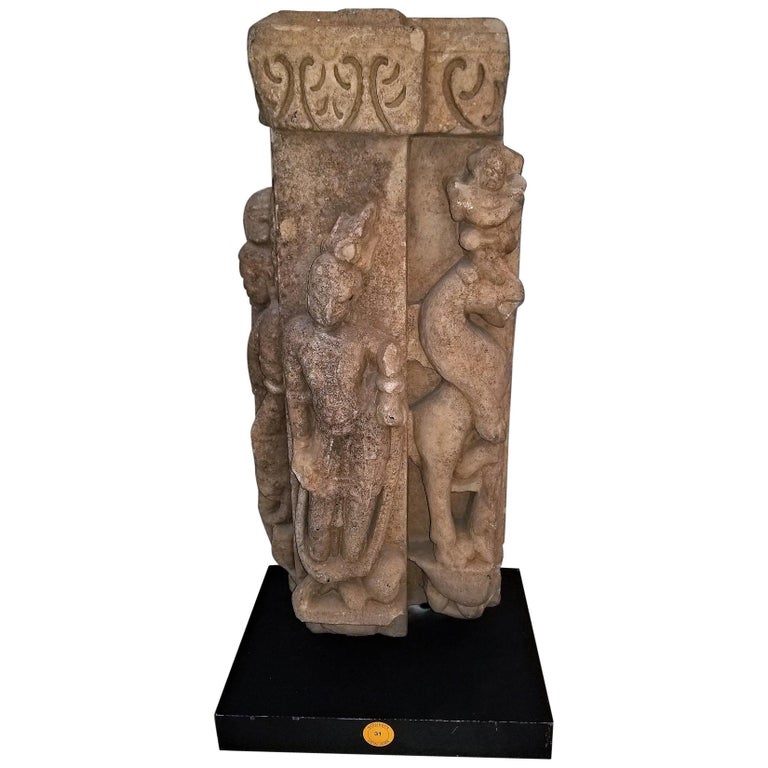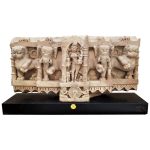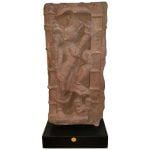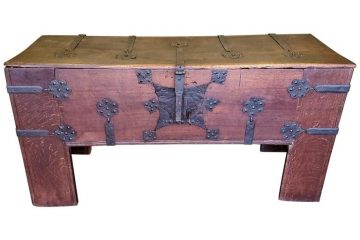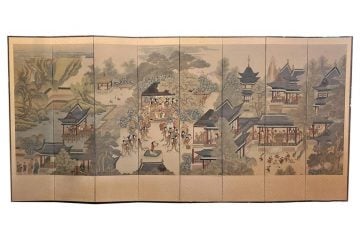10C Temple Bracket Buff Sandstone Central India
PRESENTING a STUNNING piece of Indian Antiquity from the 10th Century, namely, a Temple Bracket Buff Sandstone Central India Carving.
From Central India.
This piece has impeccable Provenance !
It was purchased by a Private Dallas Collector at Sotheby’s New York Auction on 24th September 2004. Sale Number 8008, Lot No. 31.
Sotheby’s operate a twice yearly auction of Southeast Asian Art & Antiquities in New York in the months of March and September.
The sculpture was described as: “The three faces of the bracket carved in rtelief with images of the bearded Brahma, holding a kalasha on the left, a male deity holding a vajra at center and a griffin with a garland – bearing celestial above on the right, the top with an incised foliate decoration.
Height 20.5 in. (52.1 cm.)
10th/11th Century.
Other Properties”
It carried an Auction estimate of USD 4,000 to USD 6,000 and sold for USD 4,200 (not including buyers premium).
Allowing for inflation alone this would be over $7,000 in today’s value.
The original Sotheby’s Lot No. Label is still attached, as is the catalog label on the back.
It has substantially increased in value over the years as a RARE piece from a prestigious Collection and a RARE piece of Asian antiquity.
Brahma (Sanskrit: ब्रह्मा, IAST: Brahmā) is the creator god in Hinduism. He is also known as Svayambhu (self-born) or the creative aspect of Vishnu, Vāgīśa (Lord of Speech), and the creator of the four Vedas, one from each of his mouths. Brahma is consort of Saraswati and he is the father of Four Kumaras, Narada, Daksha, Marichi and many more.
Brahma is sometimes identified with the Vedic god Prajapati, he is also known as Vedanatha (god of Vedas), Gyaneshwar (god of Knowledge), Chaturmukha (having Four Faces) Svayambhu (self born), Brahmanarayana (half Brahma and half Vishnu), etc, as well as linked to Kama and Hiranyagarbha (the cosmic egg). He is more prominently mentioned in the post-Vedic Hindu epics and the mythologies in the Puranas. In the epics, he is conflated with Purusha. Although, Brahma is part of the Brahma-Vishnu-Shiva Trimurti, ancient Hindu scriptures mention multiple other trinities of gods or goddesses which do not include Brahma.
Several Puranas describe him as emerging from a lotus, connected to the navel of Lord Vishnu. Other Puranas suggest that he is born from Shiva or his aspects, or he is a supreme god in diverse versions of Hindu mythology. Brahma, along with other deities, is sometimes viewed as a form (saguna) of the otherwise formless (nirguna) Brahman, the ultimate metaphysical reality in Vedantic Hinduism. In an alternate version, some Puranas state him to be the father of Prajapatis.
According to some, Brahma does not enjoy popular worship in present-age Hinduism and has lesser importance than the other members of the Trimurti, Vishnu and Shiva. Brahma is revered in ancient texts, yet rarely worshiped as a primary deity in India. Very few temples dedicated to him exist in India; the most famous being the Brahma Temple, Pushkar in Rajasthan. Brahma temples are found outside India, such as at the Erawan Shrine in Bangkok.
Link: https://en.wikipedia.org/wiki/Brahma
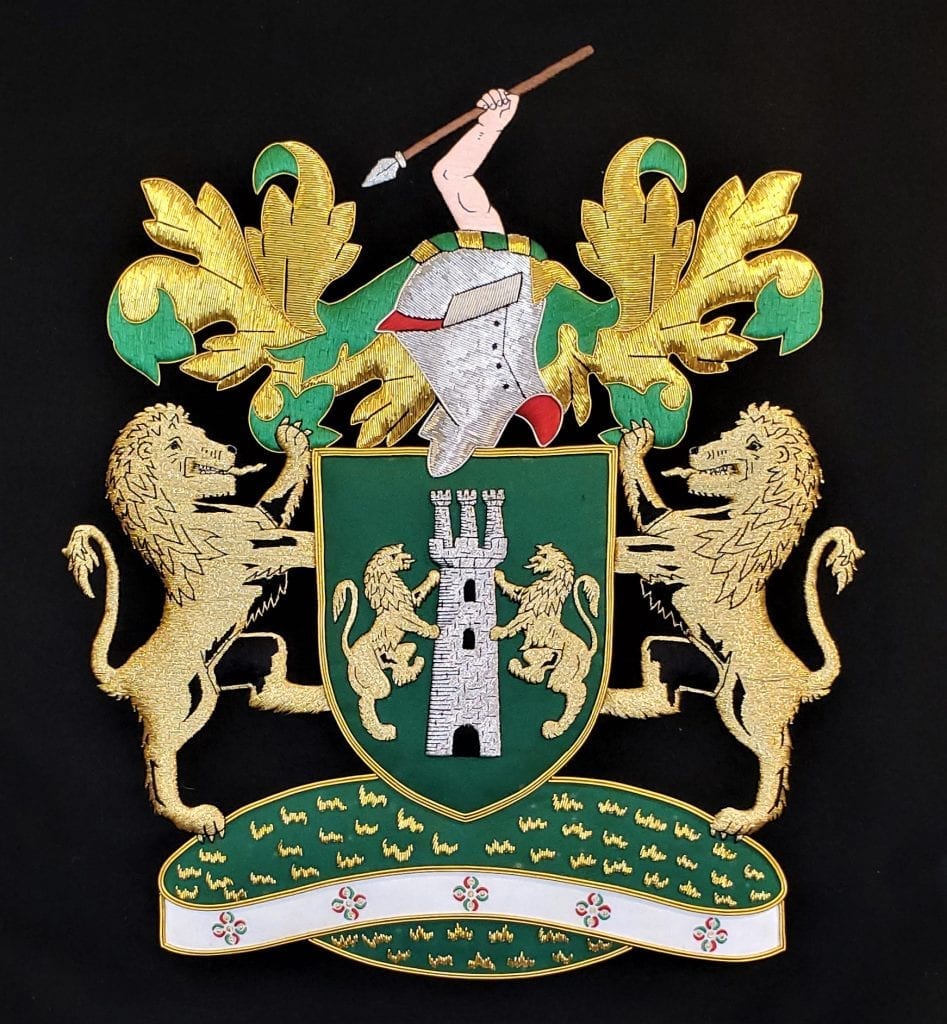

10C Temple Bracket Buff Sandstone Central India
Provenance: See Above.
Condition: Very good.
Dimensions: 23 inches Tall, 8.75 inches Deep and 11 inches Wide
PRICE: $14,800 – SALE PRICE NOW: $12,000
